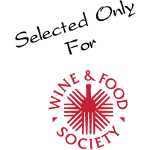THE JEWELS of THREE MICHELIN starred CHEF JOAN ROCA ..
Posted on by Wine & Food Society
Article By: Publisher & Journalist Margaux Cintrano
Photo Copyright: Restaurant El Celler de Can Roca
The Executive Chef of El Celler de Can Roca, Joan Roca belongs to the generation of entreprennurial and visionary high end Chefs, that have gradually been turning the Iberian Peninsula, and specifically his birthplace, Girona one hour north of Barcelona, into a global epicurean shrine.
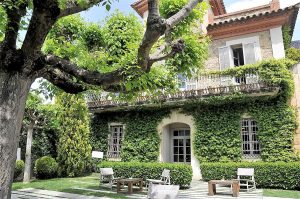 London Restaurant Magazine had awarded first place to El Celler de Can Roca, a Three Michelin Starred Restaurant for the World´s Best Restaurant in April 2013 for the first time.
London Restaurant Magazine had awarded first place to El Celler de Can Roca, a Three Michelin Starred Restaurant for the World´s Best Restaurant in April 2013 for the first time.
Chef Joan directs and manages the restaurant along with his two brothers, Master Sommelier Josep Roca and Executive Pastry Chef Jordi Roca and together, they have aimed to create an extraordinary epicurean experience for each and every diner.
The triology of Rocas, have long sought out unique culinary techniques and each with their own passion for exploring the links between aromas, perfumes, and flavors, almost as if they were sorcerers brewing ingredients for a spell.
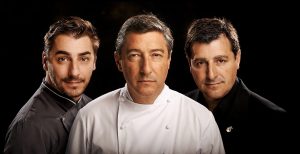 One example of this, is how Chef Joan has revitalised ancient ingredients such as edible metallic foil papers of gold, silver and copper, which are said to lower cholesterol and date back to The Persian Empire, in the 6th century.
One example of this, is how Chef Joan has revitalised ancient ingredients such as edible metallic foil papers of gold, silver and copper, which are said to lower cholesterol and date back to The Persian Empire, in the 6th century.
A visit to EL CELLER DE CAN ROCA, which is set in a stone manor townhouse nestled amongst lush micro climate herbal and historical gardens, requires a willingness to suspend the antiquated notion that eating is a fundamental of life, something we do in order to survive. There is little about a lunch or dinner at EL CELLER DE CAN ROCA that can be compared to any notion that we eat to live.
INTERVIEW WITH CHEF JOAN ROCA, FACE TO FACE ..
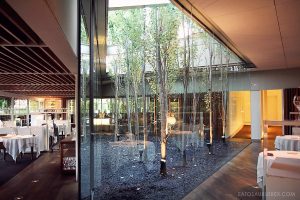 Margaux: While lots of restaurants can turn out a good meal or two, few can match the Roca Brothers and their colossal portfolio of of sublime finesse and wines. What has led to your success today.
Margaux: While lots of restaurants can turn out a good meal or two, few can match the Roca Brothers and their colossal portfolio of of sublime finesse and wines. What has led to your success today.
J.R. Firstly, our relocation in 2010, has definitely marked our turning point and furthermore, the merging of gastronomic traditions with Catalan and Mediterranean cuisines coupled with state of the art advanced technology.
Margaux: Please tell our readers, about your mentors?
J.R. Firstly, I worked with the late Chef Santi Santamaria in 1988. Then in 1989, I worked with Ferràn Adrià at the former El Bulli in Las Rosas, Girona. In 1992, I was doing another apprenticeship under the coaching of Three Michelin Star Chef, Georges Blanc in Vonnas, France. These internships were the keys to my inaugurating a new beginning as a Chef.
Margaux: Could you tell us about a preferred method of preparation that you employ?
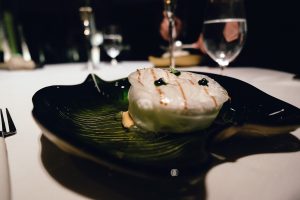 J.R. The Sous Vide, a process in French which denotes, “under vacuum”. It involves vacuum packing a food product in a plastic like baggie and cooking the food at a lower temperature than normal at an extended time and then, quickly cooling the food. The advantages are that the Chef or Home Gourmet receives less shrinkage of the raw materials and the product is moister, and higher volumes of food can be prepared much quicker. The method was originally used during The Persian Empire without the plastic however, enclosed and wrapped in textiles.
J.R. The Sous Vide, a process in French which denotes, “under vacuum”. It involves vacuum packing a food product in a plastic like baggie and cooking the food at a lower temperature than normal at an extended time and then, quickly cooling the food. The advantages are that the Chef or Home Gourmet receives less shrinkage of the raw materials and the product is moister, and higher volumes of food can be prepared much quicker. The method was originally used during The Persian Empire without the plastic however, enclosed and wrapped in textiles.
Margaux: I am aware that you had travelled several times to Japan.
J.R. Firstly, the Kai Seiki gastronomic route in Kyoto, has strongly influenced our art of plating. KAI means breast and SEIKI translates to pebbles or stones. Historical Kyoto has maintained its ancient gastronomic traditions which were started by Medieval Buddhist Monks who would carry servings of food in their pockets for long journies or be served platters of assorted types of rice, sashimi, marine pickles and Udon Noodles.
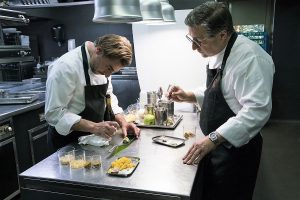 This has become Japan´s renovated evolutionary Tapas movement in the 21st century. To Clarify, ROCA in Spanish means STONE. Thus, when possible, the implementing of three stones, for the 3 Roca Brothers is utilised in plating up our dishes. Furthermore, we utilise a savory ingredient, a sweet, a semi sweet, a bitter, a sour and an aromatic in uncountable courses and starters. In France and at El Bulli, we had learnt to sprinkle, drizzle, to create foams of all textures and to handle the garnishing and dressing as if the porcelain were a canvas painting.
This has become Japan´s renovated evolutionary Tapas movement in the 21st century. To Clarify, ROCA in Spanish means STONE. Thus, when possible, the implementing of three stones, for the 3 Roca Brothers is utilised in plating up our dishes. Furthermore, we utilise a savory ingredient, a sweet, a semi sweet, a bitter, a sour and an aromatic in uncountable courses and starters. In France and at El Bulli, we had learnt to sprinkle, drizzle, to create foams of all textures and to handle the garnishing and dressing as if the porcelain were a canvas painting.
Margaux: Surrealism or the Provençal School of painting inspirations ?
J.R. Another great inspiration has always been the French Impressionists, Miró, Dali, Picasso and the Asian Schools of Painting, very much so.
Margaux: Gastronomic focused travel.
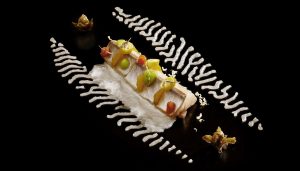 J.R. Since, we have travelled to Japan and China several times, and to Peru, Columbia and Mexico, in 2014, we are planning the rest of the Americas & Caribbean and The Nordic Countries between 2019 and 2020.
J.R. Since, we have travelled to Japan and China several times, and to Peru, Columbia and Mexico, in 2014, we are planning the rest of the Americas & Caribbean and The Nordic Countries between 2019 and 2020.
Search
Recent Posts
Recent Comments
- Naia Kelly on TASTE your EMOTION with Federico CAPOVILLA
- Mimi Houston on A NEW Sensory EXPERIENCE from AMSTERDAM





